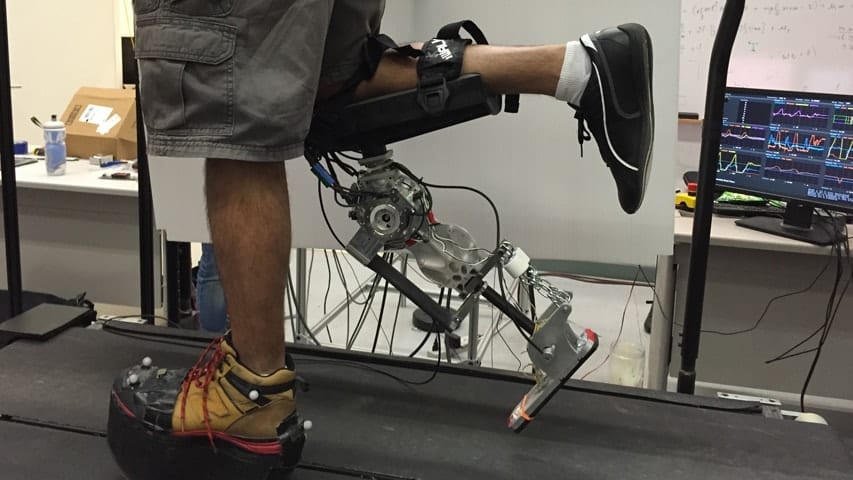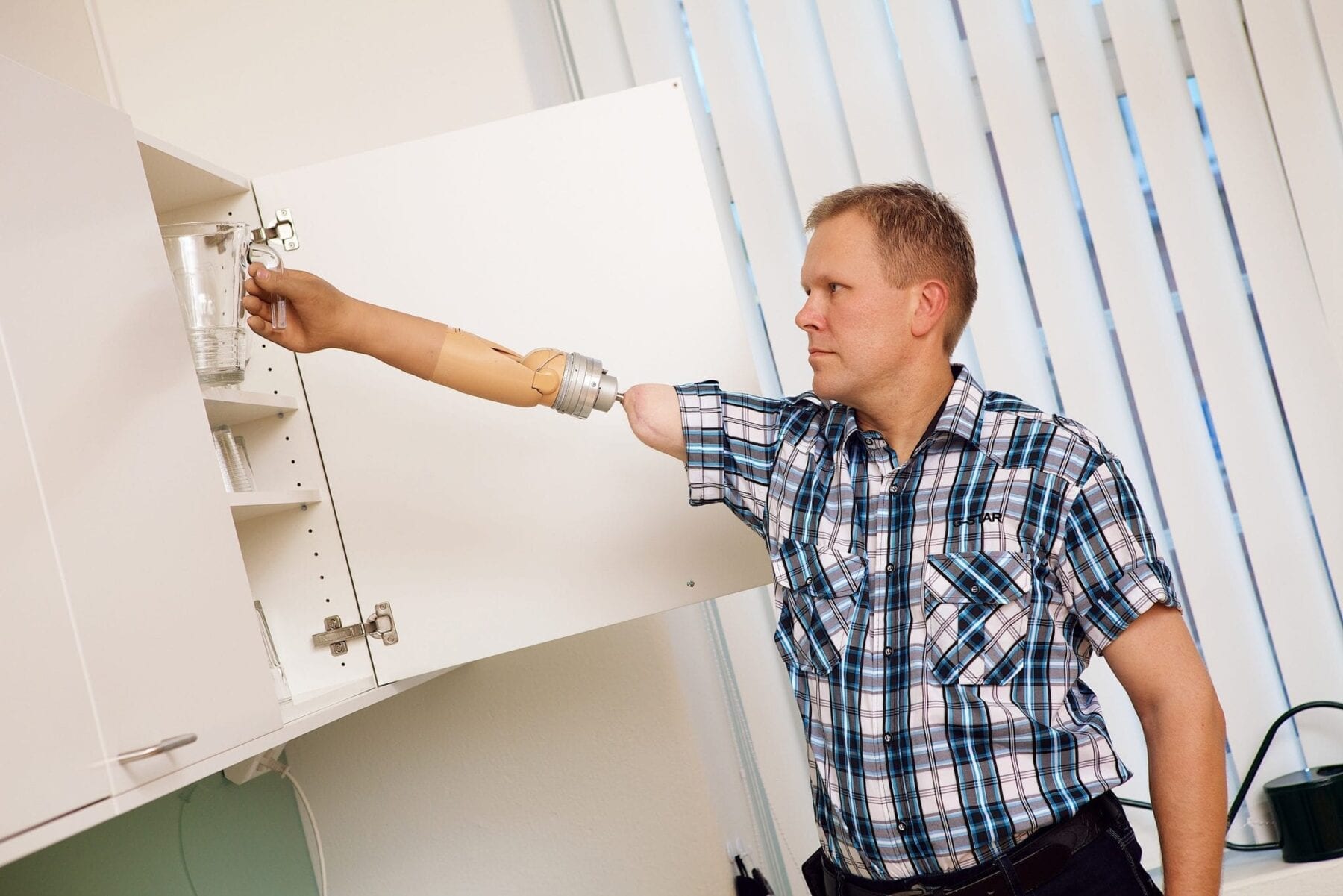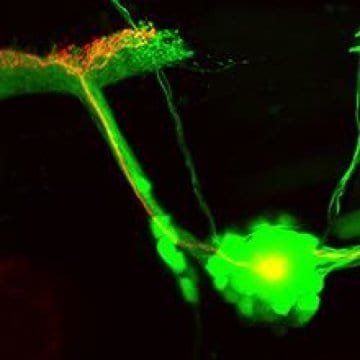
Lower-leg Amputees Will Test Carnegie Mellon’s Balance Recovery Technology
Trips and stumbles too often lead to falls for amputees using leg prosthetics, but a robotic leg prosthesis being developed at Carnegie Mellon University promises to help users recover their balance by using techniques based on the way human legs are controlled.
Hartmut Geyer, assistant professor of robotics, said a control strategy devised by studying human reflexes and other neuromuscular control systems has shown promise in simulation and in laboratory testing, producing stable walking gaits over uneven terrain and better recovery from trips and shoves.
Over the next three years, as part of a $900,000 National Robotics Initiative study funded through the National Science Foundation, this technology will be further developed and tested using volunteers with above-the-knee amputations.
Joining Geyer on the research team are Steve Collins, associate professor of mechanical engineering and robotics, and Santiago Munoz, a certified prosthetist orthotist and instructor in the Department of Rehabilitation Science and Technology at the University of Pittsburgh.
“Powered prostheses can help compensate for missing leg muscles, but if amputees are afraid of falling down, they won’t use them,” Geyer said. “Today’s prosthetics try to mimic natural leg motion, yet they can’t respond like a healthy human leg would to trips, stumbles and pushes. Our work is motivated by the idea that if we understand how humans control their limbs, we can use those principles to control robotic limbs.”
“Our work is motivated by the idea that if we understand how humans control their limbs, we can use those principles to control robotic limbs.” — Hartmut Geyer
Those principles might aid not only leg prostheses, but also legged robots. Geyer’s latest findings applying the neuromuscular control scheme to prosthetic legs and, in simulation, to full-size walking robots, were presented recently at the IEEE International Conference on Intelligent Robots and Systems in Hamburg, Germany. An upcoming paper in IEEE Transactions in Biomedical Engineering focuses specifically on how this control scheme can improve balance recovery.
Geyer has studied the dynamics of legged walking and motor control for the past decade. Among his observations is the role of the leg extensor muscles, which generally work to straighten joints. He says the force feedback from these muscles automatically responds to ground disturbances, quickly slowing leg movement or extending the leg further, as necessary.
Geyer’s team has evaluated the neuromuscular model by using computer simulations and a cable-driven device about half the size of a human leg, called the Robotic Neuromuscular Leg 2. The leg test bed was funded by theEunice Kennedy Shriver National Institute of Child Health & Human Development.
The researchers found that the neuromuscular control method can reproduce normal walking patterns and that it effectively responds to disturbances as the leg begins to swing forward as well as late in the swing. More work will be necessary, he noted, because the control scheme doesn’t yet respond effectively to disturbances at mid-swing.
Powered prosthetics have motors that can adjust the angle of the knee and ankle during walking, allowing a more natural gait. These motors also generate force to compensate for missing muscles, making it less physically tasking for an amputee to walk and enabling them to move as fast as an able-bodied person.
Read more: STRATEGY BASED ON HUMAN REFLEXES MAY KEEP LEGGED ROBOTS, PROSTHETIC LEGS FROM TRIPPING
The Latest on: Balance Recovery Technology
[google_news title=”” keyword=”Balance Recovery Technology” num_posts=”10″ blurb_length=”0″ show_thumb=”left”]
via Google News
The Latest on: Balance Recovery Technology
- ‘Not out of the woods yet’: Transnet says phase 2 of recovery plan is underwayon April 28, 2024 at 6:22 am
While the first phase entailed stabilising operational performance, the second phase – currently underway – is geared towards improving operational and financial performance during the financial year ...
- Property market recovery on the horizonon April 25, 2024 at 1:32 pm
When it comes to Chinese real estate, John Lam is a lone wolf. The UBS analyst shocked markets three years ago with a rare “sell” rating on China Evergrande Group, 11 months before it defaulted and ...
- The Balance HealthCare Group expands luxury mental health and addiction services for UHNW individualson April 25, 2024 at 7:29 am
The Balance RehabClinic, renowned for its luxury mental health and addiction services, proudly announces its expansion into The Balance Healthcare Group: a collection of premium mental health ...
- Seagate Technology: Valuation Needs To Go Down Some More To Be Attractiveon April 25, 2024 at 5:27 am
Seagate Technology reported strong Q3 2024 results, with sequential revenue growth and expanding margins. See why I continue to be neutral on STX stock.
- The Balance RehabClinic: The Balance HealthCare Group expands luxury mental health and addiction services for UHNW individualson April 25, 2024 at 1:50 am
The Balance RehabClinic, renowned for its luxury mental health and addiction services, proudly announces its expansion into The Balance Healthcare Group: ...
- Greenwave Technology Solutions Further Strengthens its Balance Sheeton April 23, 2024 at 4:07 am
Greenwave Technology Solutions, Inc. ("Greenwave" or the "Company") (Nasdaq: GWAV), a leading operator of metal recycling facilities in Virginia, North Carolina, and Ohio, announced today that on ...
- FTSE 100 hits record high; UK economy’s recovery from recession gathers pace – business liveon April 23, 2024 at 3:30 am
Rolling coverage of the latest economic and financial news ...
- Technology Hitting The Peak Of The 2024 Market Cycle With Rotation To Valueon April 21, 2024 at 1:11 pm
In 2024, there are things happening that we have not seen in decades. One is we have the largest ongoing quantitative tightening program from the Federal Reserve that we've seen -- ever seen, and ...
- The Science of Balance: Healy Leads with Electromagnetic Innovations for Body and Mindon April 18, 2024 at 7:26 am
Photo from Healy Breaking new ground in the quest for holistic wellness, Healy emerges as a beacon of innovation, tran ...
- 12 Oaks, Claiborne Balance Growth, Recovery as Role of Regional Senior Living Operator Shiftson April 17, 2024 at 4:02 pm
The senior living industry is in a state of flux in 2024 as operators look to stick the landing on their pandemic recovery, all while growing for the ...
via Bing News










